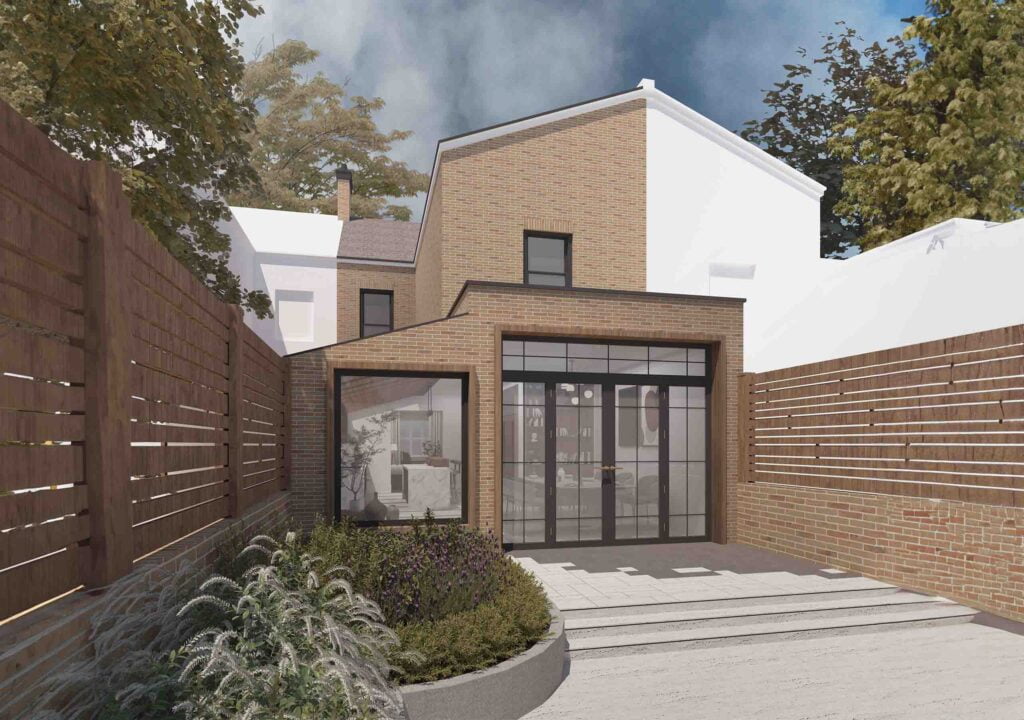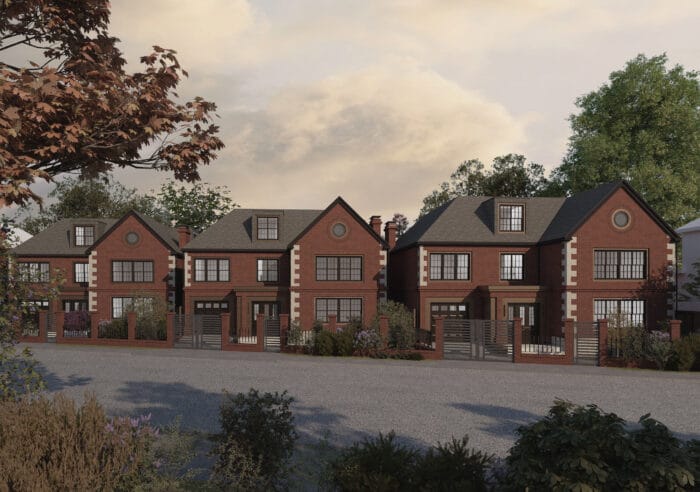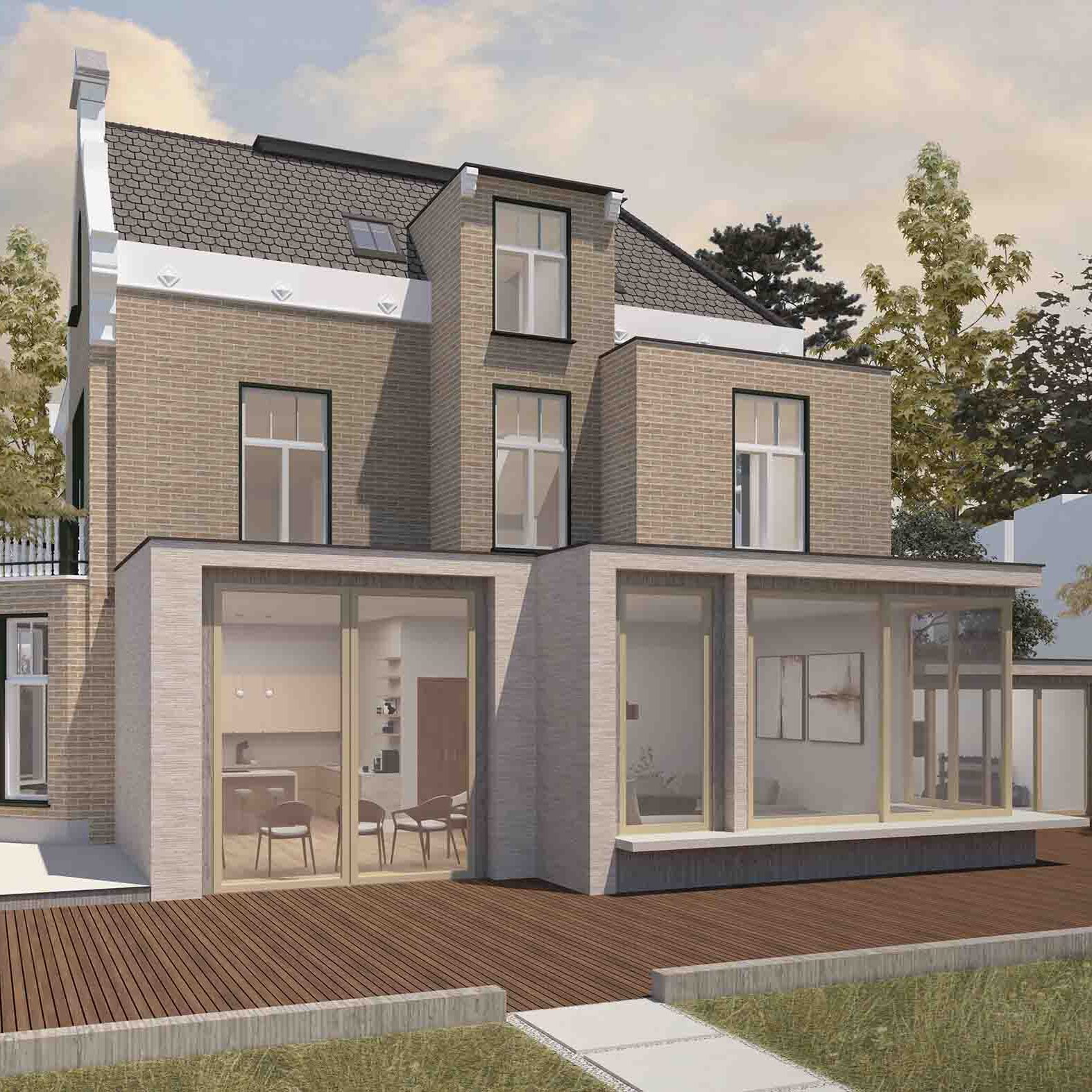Am I In a Conservation Area?
Planning a new build or home extension is exciting, but if your property is located in a conservation area, you’ll need to be aware of some added complexities. Whether you’re looking to extend your home or start a fresh new build, this guide will walk you through what conservation areas are, why they matter, and how to find out if your property falls under one. Plus, we’ll cover the restrictions you should keep in mind and how DeVis Architecture can help navigate these rules smoothly.
In This Article
1. What Is a Conservation Area?
2. How Do I Know if I’m in a Conservation Area?
3. Why Is It Important to Know?
4. What Restrictions Come with Conservation Areas?
5. What Are the Penalties?
6. How to Navigate Conservation Area Rules
7. What’s the Difference Between a Conservation Area and Listed Building?
8. Conclusion: What Should You Do Next?
What Is a Conservation Area?
In the UK, a conservation area is a designated area of architectural or historic interest that is protected to preserve its special character. Local authorities, guided by national regulations, create these areas to maintain the unique charm of places that hold historical or architectural significance. This means that any changes, especially visible ones, like house extensions or new builds, are strictly controlled.
The first conservation areas were introduced in 1967, under the Civic Amenities Act. Today, there are over 10,000 conservation areas in England alone! In London, for instance, roughly 15% of the city’s land falls within a conservation area, with hundreds of these areas scattered across different boroughs. Some of the most notable conservation areas in London include Covent Garden, Hampstead, and Chelsea. Surrey also boasts a number of conservation areas, particularly in its historic market towns and villages. In total, Surrey is home to around 250 conservation areas, covering picturesque areas like Farnham, Guildford, and parts of Woking.

Sleek Double Storey Extension in a Conservation Area – Copper House
How Do I Know if I’m in a Conservation Area?
You might be wondering, Am I in a conservation area? It’s a great question, and fortunately, there are easy ways to find out. The simplest method is to check with your local council. Most local authorities have interactive maps on their websites where you can input your postcode to see if your home is in a conservation area. Alternatively, you can search through your property deeds or speak with your solicitor, who will typically inform you of any special designations when you purchase a property.
The easiest way to discover if you are in a conservation area is to ask a professional like us, however, if you’d prefer to research yourself, follow these key steps:
- If you don’t already know, find your local authority using this gov.uk tool with just your postcode!
- Search online for “conservation areas in <insert your LPA>.
- Explore the list or your LPA’s interactive map to find out if your home is within a conservation area.
- Top Tip: You can also use the interactive map to find out other useful information, such as if you are in a Flood Risk Area or if there are any Tree Preservation Orders (TPOs) on your land!
- If technology isn’t your thing, you can always call or email your local council to ask them to find out for you. As experts in conservation areas, we’re also on hand if you’d like to ask us any particular questions!
If you’re planning an extension or new home in your garden and are unsure whether you’re in a conservation area, this is the first step you’ll need to take. Knowing where you stand helps ensure you’re working within the right guidelines from the outset. At DeVis Architecture, we can also help you identify whether your property falls under conservation protections and advise you on the next steps.

Traditional Conservation Area Wraparound Extension – Walnut House
Why Is It Important to Know?
Knowing if you’re in a conservation area is essential. It affects what you can and cannot do with your property. These areas protect historical and architectural value. Local councils enforce strict rules on any changes allowed.
Unlike areas outside these zones, you can’t simply apply for planning permission and expect it to be a straightforward process. The council will carefully review any plans to ensure that the character of the area is maintained. This can often mean restrictions on the size, materials, design, and even colour schemes for new builds and home extensions.

Contemporary Extension & Basement in a Conservation Area – Monument House
What Restrictions Come with Conservation Areas?
The specific restrictions within conservation areas can vary depending on the local authority, but here are some of the most common rules you’ll likely encounter if you’re in one:
1. Alterations and Extensions
If you’re planning a home extension, the design must respect the character of the area. This might mean using specific materials, keeping the scale and massing in line with neighbouring buildings, and adhering to certain architectural styles. For instance, modern design ideas like glass box extensions might be rejected in favour of more traditional designs that match the surrounding homes in some cases.
2. New Builds
Building from scratch in a conservation area can be particularly challenging. Councils will often scrutinise designs more heavily, ensuring that new homes don’t detract from the area’s character. You’ll need to submit detailed plans and may need to make revisions based on feedback from the local conservation officer.
3. Demolition
You’ll need permission for any demolition within a conservation area. Even something like removing a small garden wall might require consent. Buildings that contribute to the area’s historical or architectural interest are typically protected, and tearing them down could be prohibited altogether.
4. Trees
Trees in conservation areas are also protected. If you’re planning on felling, trimming, or even cutting back trees in your garden, you’ll need to get approval from the council. This ensures that the greenery, which often adds to the area’s charm, is preserved.
5. Windows and Doors
Certain features of your home, like original windows and doors, may need to be maintained or replaced with materials and designs that are in keeping with the conservation area. For example, if your home has traditional timber sash windows, you may be required to replace them with similar ones, rather than opting for modern uPVC windows.

Concept New Build Homes in a Conservation Area – Trinity House
What Are the Penalties?
If you go ahead with unauthorised work in a conservation area, you may need to apply for retrospective planning permission. If refused you could face hefty fines, or worse, be required to undo the work entirely. Imagine spending time and money on a stunning extension, only to be told you have to take it down because it wasn’t approved – not ideal!
This is why it’s so important to ensure you’ve got the right permissions before starting any work. At DeVis Architecture, we can help with this process, ensuring that your project complies with all the necessary regulations and helping you avoid costly, and stressful, mistakes.

Conservation Area House Extension Plans – Monument House
How to Navigate Conservation Area Rules
Navigating the rules around conservation areas might sound daunting, but it’s entirely possible to design beautiful, functional extensions and new builds that both satisfy the council and enhance your home. It’s all about understanding the limitations and working creatively within them.
Here at DeVis Architecture, we design homes and extensions that meet your needs while following conservation area rules. Our team has plenty of experience working in these protected zones, from Central London to the historical suburbs of Surrey. We know how to balance modern design with preserving the area’s character. If you’re planning a project in a conservation area, contact us, and we’ll help make it happen!

Meet the Founders, Zak & Lina – DeVis Architecture
What’s the Difference Between a Conservation Area and Listed Building?
While both conservation areas and listed buildings aim to preserve architectural and historic significance, they function quite differently. A conservation area covers a whole neighbourhood or street, protecting the overall character of the area- this might include buildings, trees, fences, and even the layout of gardens. By contrast, a listed building is a specific structure that has been individually recognised for its special architectural or historic interest. These buildings/monuments are recorded on the National Heritage List for England and given a grade (Grade I, II*, or II) depending on their level of historic or architectural importance.
If your home is in a conservation area but not listed, you’ll still face tighter rules than usual- but you may have more design flexibility compared to a listed building. Listed buildings are subject to far stricter controls, including internal changes down to the smallest detail, meaning you’ll likely need Listed Building Consent for even relatively minor alterations like replacing floorboards or installing new wiring. On the other hand, conservation area protections are more focused on what’s visible from the public realm, and can be more relaxed about alterations to the rear of your property.
In practice, it’s not uncommon for a property to fall under both categories, as listed buildings often fall within conservation areas. If that’s the case, your project will need particularly sensitive handling. At DeVis Architecture, we’ve worked with both conservation area properties and listed buildings, and we can help you understand exactly what’s possible and how to bring your vision to life- without compromising your legal obligations or the character of your home.

Conservation Area Kitchen Extension & Rear Dormer – Arched House
Conclusion: What Should You Do Next?
If you’ve discovered that your home is in a conservation area, don’t panic! While there are extra hurdles to clear, it doesn’t mean your project is off the table. In fact, with the right team and careful planning, you can still achieve your dream extension or new build.
Your first step should be to get in touch with a local architect who has experience dealing with conservation areas (like us at DeVis Architecture!). We’ll guide you through the process, help secure the necessary permissions, and ensure your design meets both your expectations and the council’s requirements.
So, if you’re asking yourself, Am I in a conservation area? make sure to find out early and plan accordingly. And if you need expert advice, don’t hesitate to reach out to DeVis Architecture. We’re here to help you transform your home while preserving the unique character of the area you know and love.









